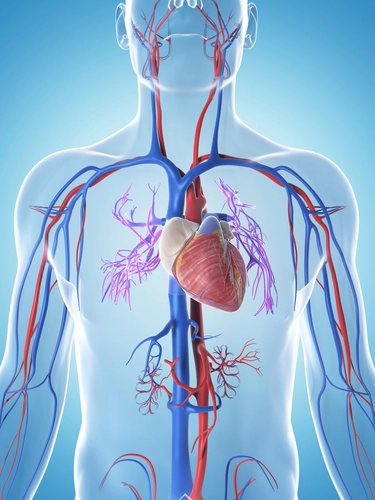ICD 10 Coding Alert
Choose From 45 New Non-Pressure Chronic Ulcer Codes for Precision Podiatry Reporting

New "without necrosis" codes join new toe fracture codes for improved documentation.
As of Oct. 1, 2017, 300 new diagnosis codes have come into play, and the field of podiatry has received its fair share of those changes. Some of them involve cosmetic descriptor revisions, while others involve more specificity in recording chronic ulcer diagnoses, toe fractures and more.
So, read on for a comprehensive overview of the codes that will impact your practice in the months and years to come.
Make Sense of the New Non-Pressure Chronic Ulcer Codes
Additions: You now have 45 new non-pressure chronic ulcer code options to choose from.
These new ulcer codes will add more specificity, but they may also affect the ability to dispense diabetic shoes because these are used to relieve pressure from areas of the foot, says Arnold Beresh, DPM, CPC, CSFAC in Newport News, Virginia.
Caution: As with the existing non-pressure chronic ulcer codes, you must first code any associated underlying condition like associated gangrene (I96) or diabetic ulcers (E08.621, E08.622, E09.621, E09.622, E10.621, E10.622, E11.621, E11.622, E13.621, E13.622), then you would add the appropriate chronic ulcer code to your claim form.
You may be familiar with the current ICD-10 codes using the wording "non-pressure chronic ulcer with necrosis of muscle."
The new codes add options for non-pressure chronic ulcers without evidence of necrosis. The new code choices are:
- L97.305 - (Non-pressure chronic ulcer of unspecified ankle with muscle involvement without evidence of necrosis)
- L97.306 - (... with bone involvement without evidence of necrosis)
- L97.308 - (... with other specified severity).
You'll follow a similar code pattern for the right ankle (L97.315-L97.318) and left ankle (L97.325-L97.328).
ICD-10-CM's "without necrosis" additions don't stop with the ankle. You'll also find similarly appointed codes for the unspecified, right, left sides of:
- the heel and midfoot (L97.405-L97.425),
- other part of the foot (L97.505-L97.525),
- other part of the lower leg (L97.805-L97.825), and
- part of the lower leg (L97.905-L97.925).
Necrosis defined: Necrosis refers to how healthy the wound is, according to Jordan Meyers, DPM, partner at Raleigh Foot and Ankle Center and consultant at Treace Medical Concepts, Inc. in Raleigh, North Carolina.
Necrosis is a sign that there is likely inadequate perfusion to the wound (vascular issue), Meyers says.
"Without the sign of necrosis there is really nothing to debride by definition of the debridement codes; therefore, treatment is only wound care," Beresh adds.
Important: Watch out for the key descriptor terms "with bone involvement" versus "with muscle involvement." This distinction helps define the depth of the wound and how much treatment may be involved, according to Meyers. The deeper the wound, the deeper the problem and the higher risk of infection or need for surgery.
"Bone doesn't like to be exposed to air, so you have a higher chance of getting osteomyelitis in those wounds," Meyers adds.
Pay Attention to Word Changes in Code Descriptors
Revisions: For several code descriptors, only one word will change: "extremities" to "extremity."
In other words, instead of the current descriptor of "Embolism and thrombosis of superficial veins of right lower extremities" for I82.811, you will see the code descriptor of "Embolism and thrombosis of superficial veins of right lower extremity."
This language holds true for:
- I82.811 through I82.819 - (... unspecified lower extremity)
- I83.811 - (Varicose veins of right lower extremity with pain) through I83.819 (... unspecified lower extremity with pain), and
- I83.891 - (Varicose veins of right lower extremity with other complications) through I83.899 - (... unspecified lower extremity with other complications).
Tack on This Toe Fracture Descriptor Change
Additionally, in several toe fracture code descriptors, the word "medial" will change to "middle." This change will impact both displaced and nondisplaced toe fracture codes.
Toe fracture codes that will be impacted include:
- S92.521 - (Displaced fracture of middle phalanx of right lesser toe[s]) through S92.523 - (Displaced » fracture of middle phalanx of unspecified lesser toe[s]) and
- S92.524 - (Nondisplaced fracture of middle phalanx of right lesser toe[s]) through S92.526 - (Nondisplaced fracture of middle phalanx of unspecified lesser toe[s]).
"This revision makes the code specific to the middle phalanx and not to the direction of the bone placement being medial or lateral," Beresh says.
Related Articles
ICD 10 Coding Alert
- ED ICD-10 2018 Update:
Delve Into These New ICD-10-CM Substance Abuse Dx Definitions, Descriptors
New remission status codes will now add specificity to your reporting. Next year's ICD-10-CM contains [...] - Podiatry ICD-10 2018 Update:
Choose From 45 New Non-Pressure Chronic Ulcer Codes for Precision Podiatry Reporting
New "without necrosis" codes join new toe fracture codes for improved documentation. As of Oct. [...] - Cardiology ICD-10 2018 Update:
Coding Quiz: Don't Lose Heart. Take This Quiz to Prepare for the New ICD-10-CM Cardiology Codes
Hypertension, MI codes, guidelines got a makeover on Oct. 1. Ready or not, the 2018 [...] - Training:
Follow This Step-by-Step Guide When a Definitive Abdominal Pain Dx is Absent
Look to R10 codes when no classification is provided. Sometimes it just isn't possible for [...] - You Be the Coder:
Ask Mild or Persistent for Accurate Anxiety Depression Dx
Question: Our provider just performed a level three new patient evaluation and management (E/M) service for [...] - Coding Quiz:
Answers
Once you've answered the quiz questions on page 75, compare your answers with the ones [...] - Reader Question:
Pinpoint Location, Code This Newborn Discharge Correctly
Question: Our provider performed a final hospital discharge for a newborn baby that lasted over 30 [...] - Reader Question:
Use These Counseling, Chemo Codes for this Post-Op Cancer Encounter
Question: When can we bill a visit after a surgery for cancer? Our understanding is that [...]




